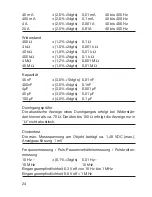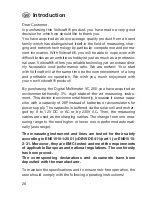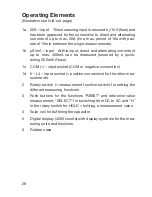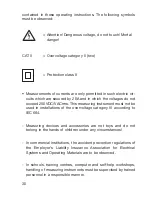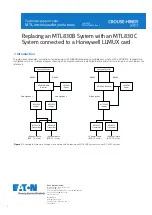
Attention!
Do not measure currents in electric circuits with voltages pos-
sibly exceeding 250VDC or VACrms. Otherwise, the measuring
instrument could be damaged and cause grave danger for you.
C Resistance measurement "
Ω
"
Attention!
Make sure that all the circuit parts, switches and
components as well as other objects to be measured
are disconnected from the voltage source at all times.
Proceed as follows to measure the resistance:
1. Set the rotary switch to resistance measurement "
Ω
".
2. Via the "SELECT" button you can change to the diode test "
" to
the continuity check "
" and to the capacity measurement "
".
3. Connect the black measuring line with the COM socket and the
red measuring line with the "HzV
Ω
" socket and connect the mea-
suring prods with the object to be measured. After a brief initiali-
sation phase, the resistance value is displayed.
Note!
If you measure resistance values, make sure that the measuring
points which you contact with the measuring prods
are free from dust, oil, solderable lacquer or similar. Such cir-
cumstances can falsify the measured result.
For a resistance higher than about 4M
Ω
the electronic system
may need a little bit of time to stabilise ("set") the indication. As
soon as "OL" (overload) appears on the display, you have
exceeded the measuringrange or the measuring circuit has
been broken.
38

